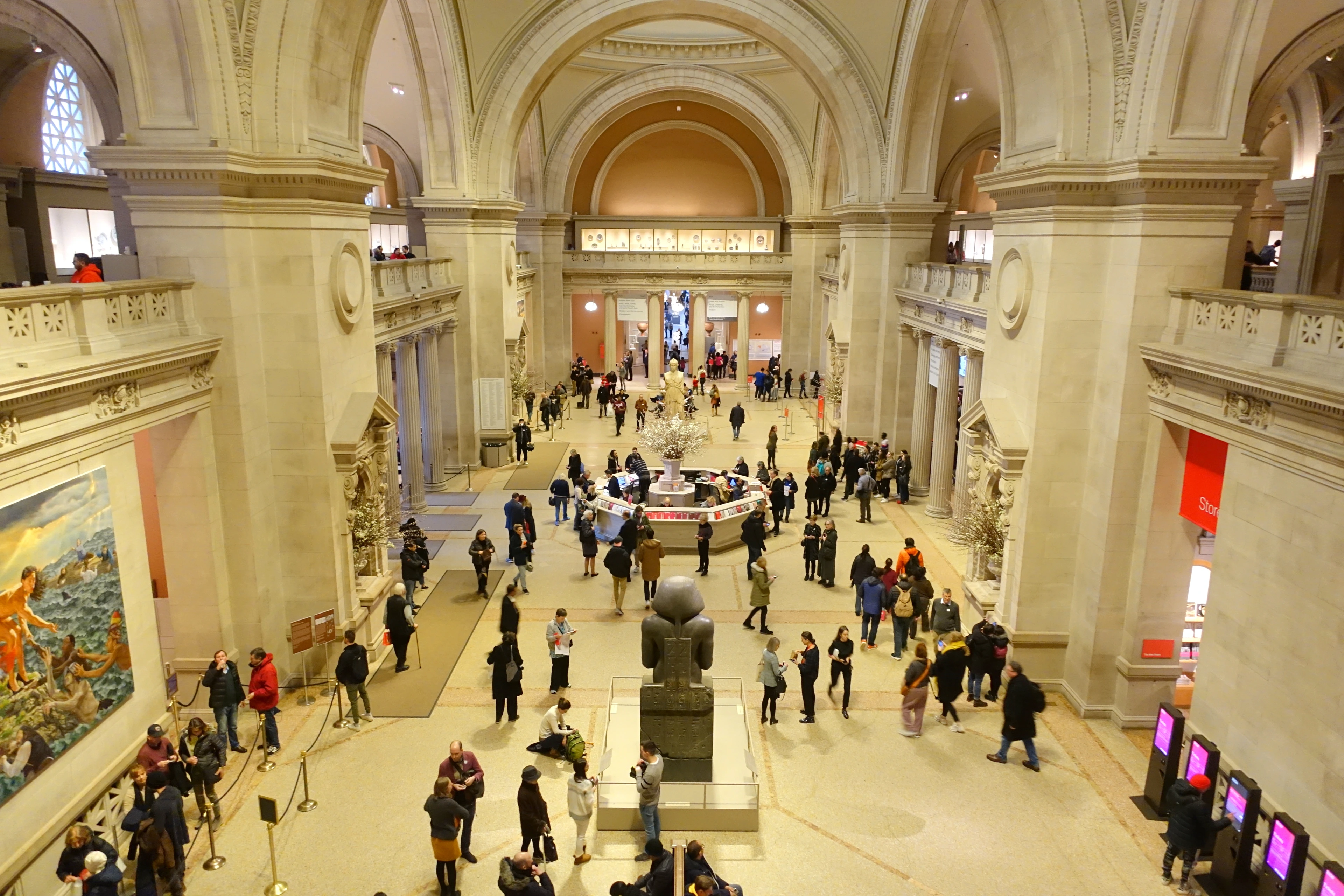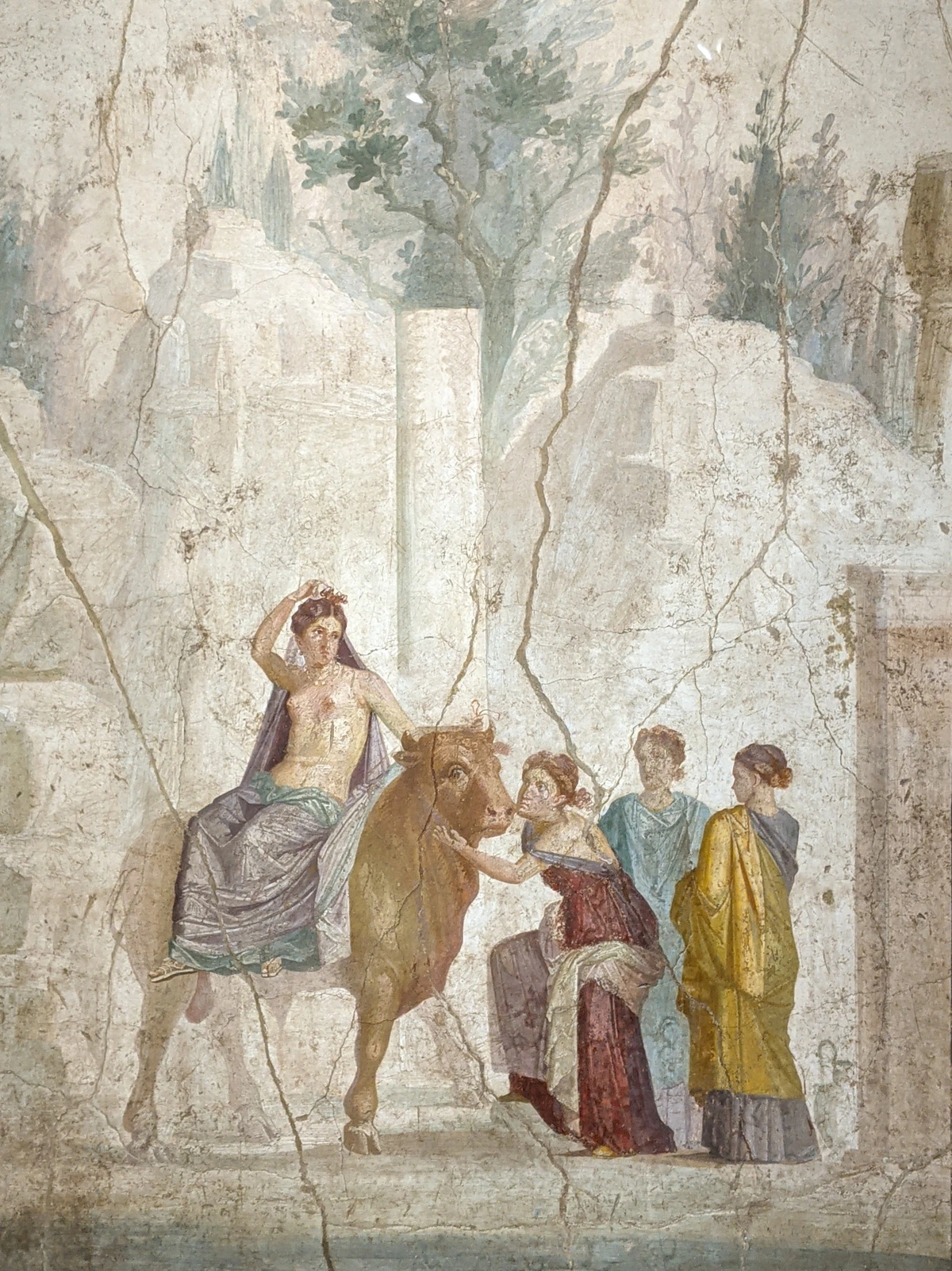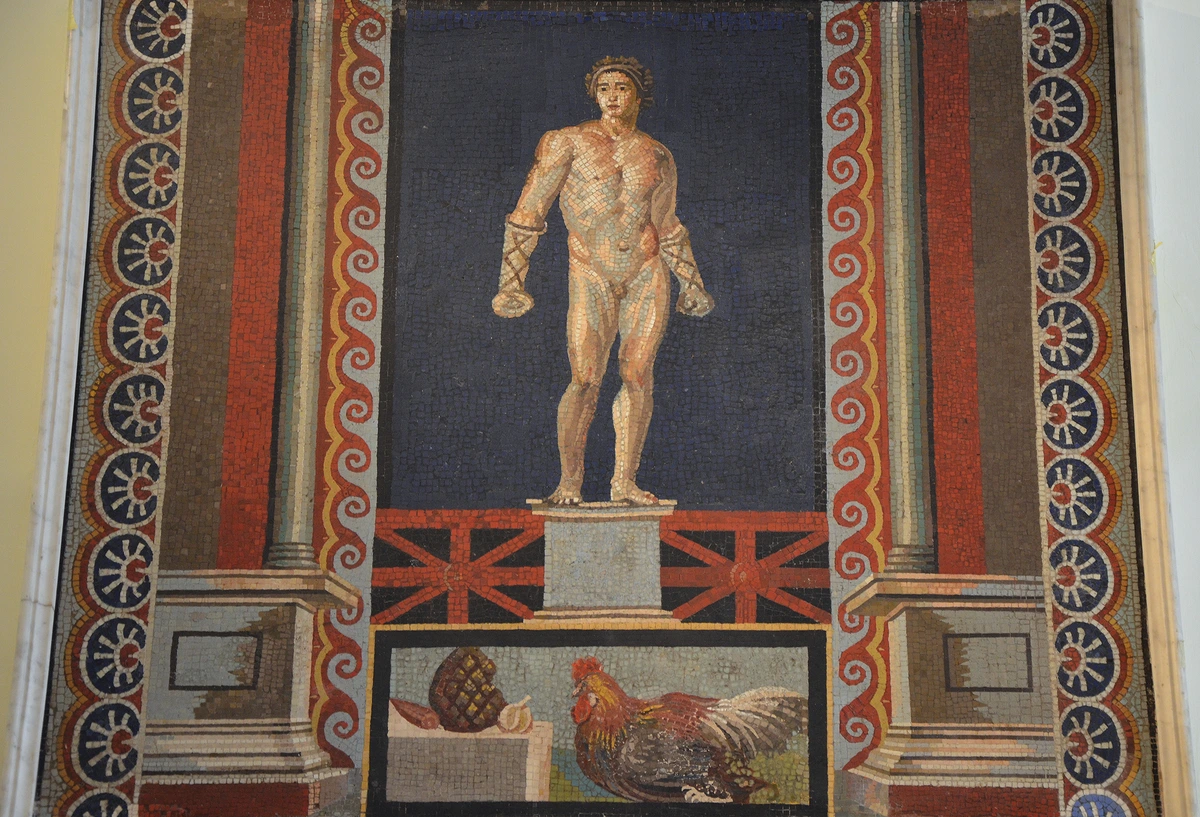
What is Classical Art? A Deep Dive into Enduring Beauty and Why It Still Grips Me
Ever wondered what classical art truly is? Join me on a personal journey through its history, core principles, and lasting influence, from ancient Greece to today. Discover why these timeless works still captivate my artistic soul.
What is Classical Art? A Deep Dive into Enduring Beauty and Why It Still Grips Me
I remember the first time I really saw classical art, not just glanced at it in a textbook. I was probably in some grand, echoing hall – maybe the Metropolitan Museum of Art in NYC (definitely worth a visit, by the way, you can read my guide here). And honestly, at first, it felt a bit... imposing. All these perfect, white marble figures, seemingly aloof, frozen in time. I thought, "Okay, that's old, it's pretty, but what's the big deal?"
But the more I looked, the more I felt it. The sheer mastery of the human form, the almost impossible grace, the stories etched in stone and fresco. It wasn't just ancient; it was a conversation spanning millennia, whispering about ideals and aspirations that still resonate today. So, let's peel back the layers and talk about what classical art really is, why it holds such power, and how it still, quite unexpectedly, finds its way into my own creative process.
The Core of Classical: More Than Just Old Statues
When I talk about classical art, I'm primarily looking at the art of ancient Greece and Rome. But it's not just a time period; it's a philosophy that shaped how they saw the world and, crucially, how they represented it. Imagine a society obsessed with order, reason, balance, and the pursuit of human potential. That's the heartbeat of classical art.
For me, it boils down to a few key concepts that, once you see them, are hard to unsee in any art:
- Idealism: This isn't about realism, necessarily. It's about showing things as they should be, not always as they are. Think perfect physiques, serene expressions, a sense of timeless perfection. They weren't just sculpting a person; they were sculpting the ideal person. It's almost like a platonic form made manifest.
- Harmony and Balance: Every element feels just right. Nothing is out of place. There's a symmetrical, often mathematical, precision to the composition that creates a profound sense of calm and order. It’s like a perfectly composed piece of music, where every note has its place. This focus on harmony is something I often grapple with in my own abstract work – finding that perfect internal balance.
- Order and Proportion: The golden ratio, human proportions, architectural rules – these weren't arbitrary. They were seen as reflections of cosmic order. When you see a Greek temple or a classical sculpture, there’s a sense of logical progression and internal consistency. If you're interested in how these principles play out in design, you might enjoy my article on what is design in art.
- Restraint and Serenity: Emotions are usually understated. You won't often see a classical figure screaming in agony or bursting with uncontrolled joy. Instead, there's a dignified composure, even in moments of drama. It's about controlled power, not raw expression.
Here's a little table to help sum up what I'm talking about:
Characteristic | Description | Example |
|---|---|---|
| Idealism | Portrayal of perfection, not always reality | Perfect human physiques, serene faces |
| Harmony | Aesthetic pleasure through logical arrangement and balance | Symmetrical compositions, flowing forms |
| Order | Adherence to rules, structure, and mathematical principles | Architectural columns, anatomical precision |
| Proportion | Rational relationships between parts, often based on human scale | Carefully measured limbs, architectural elements |
| Restraint | Understated emotion, dignified composure | Calm expressions even in dramatic scenes |
Where It All Began: Greece and Rome, The OG Influencers
To really get a handle on classical art, we have to travel back a bit. We're talking about a period often referred to as classical antiquity, which stretches roughly from the 8th century BCE to the 6th century CE. It’s a huge span, but the biggest players in the art world then were ancient Greece and ancient Rome.
Ancient Greece (roughly 800 BCE - 600 CE): Oh, the Greeks! They're the ones who really set the stage. Their art evolved from early, more rigid forms (Archaic period) to the stunning naturalism and idealism of the Classical period (around 500-323 BCE). This is where you see the birth of contrapposto (that lovely S-curve stance in statues, suggesting movement), the pursuit of perfect human anatomy, and a focus on mythological heroes and gods. Their philosophy of arete (excellence) spilled directly into their art. Take, for instance, a depiction of a god like Asklepios, the god of medicine. He's not just a guy; he's the embodiment of strength, wisdom, and the ideal healer. It’s all about elevating the human (and divine) form to its pinnacle.

Ancient Rome (roughly 509 BCE - 476 CE): The Romans admired the Greeks immensely. They conquered Greece, but then, in a beautiful twist of fate, allowed Greek art to conquer them. Roman art often borrowed heavily from Greek models, but they also put their own stamp on it. They were more practical, more interested in realism (especially in portraiture – think of those incredibly lifelike busts of emperors) and using art to glorify the state and its achievements. Roman architecture, with its grand public works, arches, and domes, is another huge legacy.
The Art Forms: Sculpting Truth, Painting Myth
When we talk about classical art, we're usually picturing certain types of artistic expression:
- Sculpture: This is probably what first springs to mind. From the majestic marble figures of Greece, celebrating the athletic and divine body, to the powerful bronze statues of Rome. They mastered techniques like contrapposto (the natural shift of weight in a standing figure) and brought stone to life in a way that still feels miraculous. When you stand before one, you can almost feel the presence, the breath of the figure.
- Architecture: Temples, theaters, public baths, aqueducts – the classical world built for eternity. Think of the Doric, Ionic, and Corinthian orders of columns, each with its distinct personality. Their buildings weren't just functional; they were statements of power, belief, and aesthetic grace. Even today, many modern buildings, especially government structures or museums, echo these classical forms.
- Painting and Mosaics: While much of ancient painting has been lost to time, what we have (mostly from Roman frescoes preserved in places like Pompeii) tells us a rich story. They depicted mythology, daily life, landscapes, and portraits. And then there are mosaics! These intricate works, made from tiny pieces of stone or glass (tesserae), were both decorative and narrative, adorning floors, walls, and ceilings. They’re absolutely fascinating, and if you want to dive deeper, I've got a whole piece on the art of mosaics history, techniques, and contemporary applications.


The Echoes: How Classical Art Keeps Resurfacing
Here’s where it gets really interesting for me: classical art didn't just disappear with the fall of Rome. Oh no, its ghost (or rather, its vibrant spirit) has haunted and inspired artists for centuries. It's like that fundamental melody that composers keep coming back to, no matter how wild their new harmonies get.
- The Renaissance (14th-17th Century): After the medieval period, artists and thinkers in Italy looked back to Greece and Rome for inspiration. Suddenly, everyone wanted to rediscover classical texts, philosophies, and, of course, art. The emphasis on humanism, ideal beauty, and naturalism? Totally classical. My guide to Renaissance art dives deep into this incredible period, and you’ll see the classical roots everywhere.
- Neoclassicism (18th-19th Century): Fast forward to the Age of Enlightenment. Rationality, civic virtue, order – these were the keywords. And guess what art movement embodied all of that? Neoclassicism. Artists like Jacques-Louis David and sculptors like Antonio Canova consciously revived classical styles, often with moralizing or heroic themes. If you're keen to understand the deeper meanings, my article on the principles of Neoclassicism in art is a great place to start.
Even in my own abstract work, the underlying principles of balance and composition, the feeling of a piece, often hearken back to these ancient ideals. I might not be painting a toga-clad figure, but I’m striving for that same internal order, that compelling rhythm that makes a viewer linger.

Seeing It for Yourself: My Favorite Places to Get Lost in Antiquity
If you're anything like me, reading about art is one thing, but experiencing it in person is something else entirely. There's a different kind of energy when you stand before a sculpture that's thousands of years old, or walk through a hall designed to evoke ancient grandeur. It's why I love visiting museums. They’re like time capsules, letting us glimpse these incredible achievements firsthand.
Some of my favorite places to soak up classical vibes include:
- The Louvre in Paris: Obvious, I know, but for good reason! The Greek and Roman collections are immense and truly breathtaking.
- The British Museum in London: The Elgin Marbles from the Parthenon are controversial, yes, but undeniably powerful.
- The Vatican Museums in Rome: The sheer scale of classical sculpture and the Sistine Chapel's Renaissance (classical-inspired) frescoes... it's overwhelming in the best way.
- The National Archaeological Museum in Athens: To see the originals in their homeland is an experience like no other.
And back to my earlier point, sometimes you just need to experience the feeling of classical architecture, even if it's a modern interpretation. The Great Hall of the Metropolitan Museum of Art, for instance, uses classical elements to create a sense of awe and history that just draws you in.

Classical Art vs. Everything Else: A Quick (and Opinionated) Look
It's easy to lump a lot of historical art together, but classical art truly has its own distinct flavour. How does it stack up against other major movements? Let's quickly compare, because understanding the differences helps highlight its unique characteristics.
Feature | Classical Art (Ancient Greece/Rome) | Romanticism (Late 18th-Mid 19th C.) | Modern Art (Late 19th-Mid 20th C.) |
|---|---|---|---|
| Core Value | Idealism, order, reason, balance | Emotion, individualism, nature, sublime | Experimentation, abstraction, subjective experience |
| Subject Matter | Mythology, history, idealized human form, civic virtue | Dramatic landscapes, literature, personal feeling | Everyday life, inner psyche, conceptual ideas |
| Style | Clear lines, harmonious composition, restrained emotion | Dynamic, dramatic, vivid colors, intense emotion | Varied (Cubism, Expressionism, Abstract), often breaks tradition |
| Purpose | Educate, commemorate, glorify ideals | Stir emotion, express individuality | Challenge perceptions, explore new forms |
Of course, there's a huge spectrum, and movements like the Renaissance and Neoclassicism are classical revivals, building on those ancient foundations. And then you get to modern art – which is a whole other beast. If you're trying to wrap your head around those distinctions, I highly recommend checking out my article on modern vs contemporary art: what's the difference. It's a journey!
My Take: Why I Still Find Myself Thinking About Togas and Temples
So, what does all this mean for an artist like me, whose work is often (you guessed it!) abstract and bursting with color? Honestly, it's more relevant than you might think. While I might not be sculpting marble gods, the core principles of classical art – balance, proportion, composition, and the pursuit of a certain harmony – are universal. They're the silent bedrock upon which all good art is built, whether it's a Greek kouros or a vibrant abstract canvas.
I find that understanding these foundations, even if I then choose to playfully subvert them, gives my own work a stronger voice. It's like learning the rules so you know how to break them effectively, you know? It's all part of the grand timeline of human creativity, and I'm just trying to add my own little splash of color to it. You can see some of my journey on my [/timeline] or, if something catches your eye, perhaps even discover a piece for your own space at [/buy].
Frequently Asked Questions About Classical Art
What is "classical antiquity"?
"Classical antiquity" refers to the long period of cultural history centered on the Mediterranean Sea, comprising the intertwined civilizations of ancient Greece and ancient Rome. It typically spans from the Greek Dark Ages (roughly 8th century BCE) to the fall of the Western Roman Empire (476 CE) and the beginning of the Middle Ages.
What are the main periods of classical Greek art?
Classical Greek art is generally divided into three main periods:
- Archaic Period (c. 800-500 BCE): Characterized by stiff, frontal figures (like kouros and kore statues) with a characteristic "Archaic smile."
- Classical Period (c. 500-323 BCE): The golden age, marked by a pursuit of idealism, naturalism, harmony, and the development of contrapposto. Think of the Parthenon and sculptures by Praxiteles.
- Hellenistic Period (c. 323-31 BCE): Followed Alexander the Great's death. Art became more dramatic, emotional, and diverse, moving away from the serene idealism of the Classical period towards heightened realism and theatricality.
Did classical artists use color?
Yes! This is one of the biggest misconceptions. While we often see classical statues as stark white marble today, they were originally painted in vibrant colors. Over centuries, the pigments faded or were eroded, leaving behind the bare stone. Similarly, ancient Greek and Roman architecture was also brightly painted. It must have been an explosion of color, quite different from our modern perception.
What is idealism in classical art?
Idealism in classical art refers to the artistic principle of representing subjects (especially the human form) in their most perfect or ideal state, rather than strictly as they appear in reality. It's about embodying concepts like beauty, virtue, and excellence, often through perfect proportions, serene expressions, and a sense of timeless grace. It's not just a copy; it's an improvement on nature.
How does classical art influence modern art?
Classical art's influence is pervasive, even in modern art. Its emphasis on fundamental principles like balance, proportion, composition, and the expressive power of the human form has laid a groundwork for countless artists. While modern movements often reacted against classical strictures, they frequently did so with an awareness of those rules. Even abstract artists draw on principles of balance and harmony rooted in classical thought. The very idea of mastery and craftsmanship also has deep classical roots.
Conclusion: The Unbreakable Thread of Beauty
So there you have it: a journey through what classical art truly means, from the sun-drenched marble of ancient Greece to its quiet (and sometimes not-so-quiet) influence on the art we make and see today. It’s more than just history; it’s a living, breathing set of ideas about beauty, order, and the human spirit that continues to shape our understanding of art. And for me, an artist constantly exploring new forms and colors, that connection to a timeless pursuit of beauty is nothing short of inspiring. It's a reminder that no matter how much art evolves, some truths about what makes a piece resonate are simply, well, classic.




